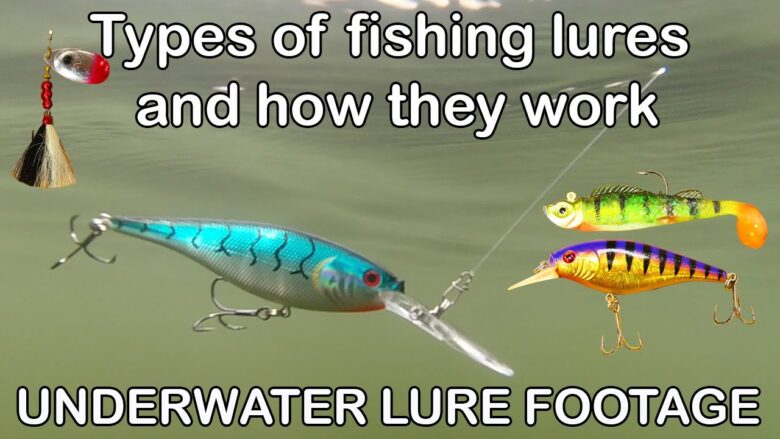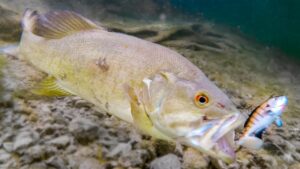Flick your wrist and splash in the water to make an enticing display with artificial lures. These baits look and move like natural prey, making fish strike. Whether you’re a pro or beginner, they’ll help you catch more.
When selecting, think about water clarity, temperature, and weather. Different lures attract different fish – crankbaits for bass and spoons for trout.
Using technique is key. Retrieve steadily, jerk, or pause intermittently. Vary speed and depth to find what works. Also, adjust your presentation based on fish behavior.
Pro Tip: Get creative with your lure selection and presentation. Sometimes an unusual approach is just what it takes to make finicky fish bite. Lure selection is like picking the perfect partner – charm those fish!
Understanding the Different Types of Artificial Lures
Different types of artificial lures exist, each designed to attract different fish species. Knowing which type to use is key for successful fishing. Here’s a summary:
Jigs have a weighted head & hook. They work in both freshwater & saltwater, especially for bottom-dwellers like bass & walleye.
Spinnerbaits feature spinning blades & a skirted body. These vibrate & flash, mimicking baitfish, enticing predatory species like pike & muskie.
Crankbaits resemble small fish or crawfish, & dive underwater. They imitate injured prey & tempt trout & largemouth bass.
Soft plastics come in many shapes, like worms, grubs & creature baits. These are versatile & can tempt multiple fish species.
Spoons have a concave shape & swim erratically, good for casting or trolling for salmon, steelhead & other gamefish.
Topwater baits float or skitter on the surface – perfect to entice aggressive predators like largemouth bass & pike.
Within each type of lure, there are many variations in size, color, weight & more. This allows anglers to choose the best one for their target species’ feeding habits.
The origin of artificial lures can be traced back to Ancient Egypt & China. Egyptians used feather & bead covered hooks while Chinese made lures from bronze with multiple hooks, similar to modern spinnerbaits.
As fishing techniques & materials have advanced, artificial lures have become more sophisticated. What was once rudimentary prey imitations are now crafted masterpieces, designed to trick even the most wary fish.
Selecting the Right Artificial Lure for the Target Fish Species
Selecting the right artificial lure for a successful fishing experience is crucial. It depends on the species, their behavior, and the conditions. To make the choice easier, here’s a table of popular lures for different fish species:
| Fish Species | Recommended Lure |
|---|---|
| Bass | Spinnerbaits, Crankbaits |
| Trout | Spoons, Soft Plastics |
| Walleye | Jigs, Live Bait |
| Pike | Jerkbaits, Swimbaits |
| Salmon | Flies, Spinners |
These suggestions come from research and experienced anglers. But, individual preferences may differ. Water temperature and clarity are also important factors to consider when choosing an artificial lure. For cold water, slow-moving lures like jigs and soft plastics are better. In clear water, brighter lures work best.
Pro Tip: Experiment! Try different lures and techniques until you find what works best for your fishing situation. Fishing with artificial lures – where even the fish can’t resist the illusion of a free meal!
Proper Techniques for Using Artificial Lures
For an enhanced fishing experience and greater success, there are some key points to consider when using artificial lures:
- Choose the right lure: Choose one that looks and moves like the baitfish in the area.
- Experiment with retrieves: Alter the speed, rhythm, and depth to appeal to the target fish.
- Accurate casting: Aim for precision when casting to rocks, submerged structures, or weed beds.
- Proper gear: Get the appropriate rod, reel, line, and leader strength for the lure.
- Water conditions: Account for water clarity, temperature, and current when choosing a lure.
- Watch and wait: Notice changes in fish behavior or feeding patterns and adjust accordingly.
Also, practicing different styles of fishing can broaden your skills and help you become more versatile. Fly fishing, jigging, or trolling can teach valuable insights into using artificial lures.
Fancy fact: did you know Macedonians used artificial flies as early as the 2nd century AD? They were made from feathers attached to hooks with materials like silver wire or horsehair. This shows that anglers have been using artificial lures for centuries!
For a rewarding fishing experience, remember these techniques and their historical roots. Then, use proper techniques when using artificial lures to get the most out of your next fishing adventure!
Tips and Tricks for Maximizing the Effectiveness of Artificial Lures
To get more fish when fishing with artificial lures, consider these tips:
- Choose the right lure for the species and conditions.
- Vary your retrieval speed – sometimes slower, sometimes faster.
- Opt for realistic colors that match the environment.
- Make sure your lure is rigged correctly.
- Use scent attractants to make lures more appealing.
- Experiment with presentations – depth, angles, and pauses.
It’s important to remember that every fishing situation is different. Factors like location, season, and angling pressure can all influence what works. So, be observant and adaptable!
Also, maintain your lures properly – clean and dry – and they’ll never let you down.
Maintenance and Care of Artificial Lures
Artificial lures need proper care to last and perform well. Here are some tips:
- Clean ’em after every trip with a cloth or brush.
- Check for loose hooks or cracks regularly.
- Store in separate compartments or tackle boxes.
Handle with care when removing fish from hooks. Pulling too hard can lead to bent or broken lures.
Fun fact: James Heddon invented the “Wooden Frog” in 1898 – the first successful artificial lure. Since then, tons of designs have been released to suit different fishing styles & species.
Safety Considerations When Fishing with Artificial Lures
Fishing with artificial lures? Don’t forget the safety measures! Here’s what you need to remember:
- Handle lures with caution. Avoid tangling hooks in clothes or body.
- Always use safety gear like gloves and eye protection.
- Properly dispose of broken or damaged lures to protect wildlife.
- Fish away from crowded areas or people.
It’s also important to stay a safe distance away from other anglers on the water. Be aware of your surroundings and potential hazards.
Did you know that early lures were made from materials like bone, feathers, and clay? That primitive lure has come a long way! So next time you cast out a modern artificial lure, remember its amazing history. Fishing with the right skills, you can be the master of the fish-catching universe!
Conclusion: Mastering the Art of Using Artificial Lures
For anglers wanting to improve their fishing skills, mastering the art of using artificial lures is a must. Knowing how to use them correctly can boost your chances of success. Here, we will discuss three vital points for getting good at this art:
- Picking the right lure is essential. Different lures imitate certain prey or attract particular types of fish. By grasping the behavior and feeding habits of the fish you’re after, you can select a lure that mimics their natural food. This enhances the odds of catching something.
- Mastering the art of presentation is key. After you’ve chosen the right lure, work out how to present it properly. Think about factors such as water depth, current speed, and weather. Adapting your retrieval speed and technique can make a huge difference in luring fish and stirring up strikes.
- Hone your observation skills. Spot subtle shifts in water movement or surface disturbances that might indicate fish activity. Look for signs like baitfish schools or birds diving in the water – they may mean predators are close by. With watchful eyes and adaptability, you can adjust your tactics and boost your chances of success.
Plus, there are some other tips that can help you master artificial lures:
- Try out various colors and sizes of lures to know what works best in each condition. A small difference can make a big impact on catching wary fish.
- Also, change your retrieval speed and pattern. Fish may respond differently to quick or slow retrieves, jerky or consistent ones. By varying your methods, you increase the likelihood of getting a reaction from fish.
- Lastly, don’t forget to practice. Like any skill, mastering the art of artificial lures takes time and patience. Spend time on the water trying different techniques and noting how fish respond. Every trip will give you invaluable knowledge that will, in the end, lead to success.





